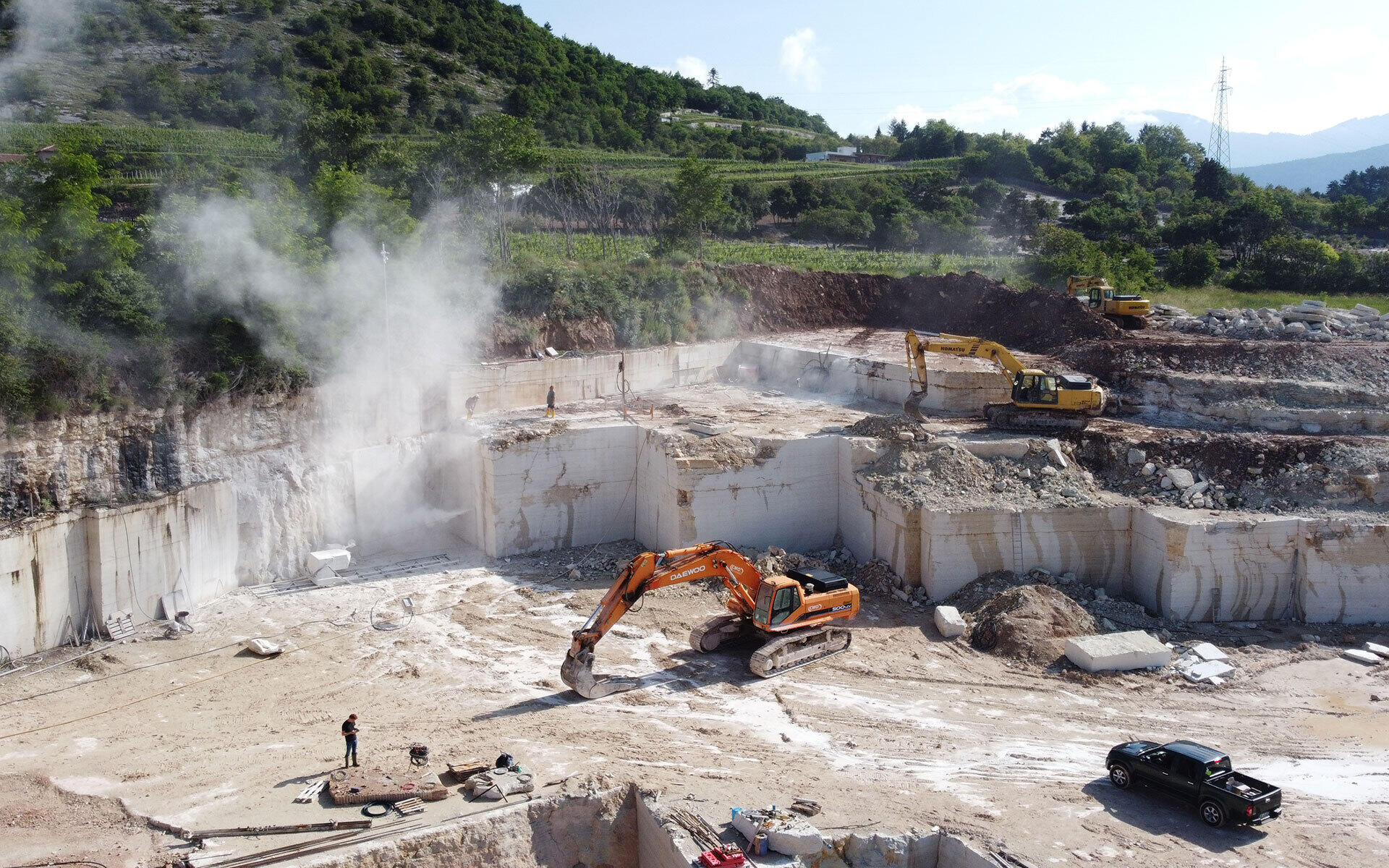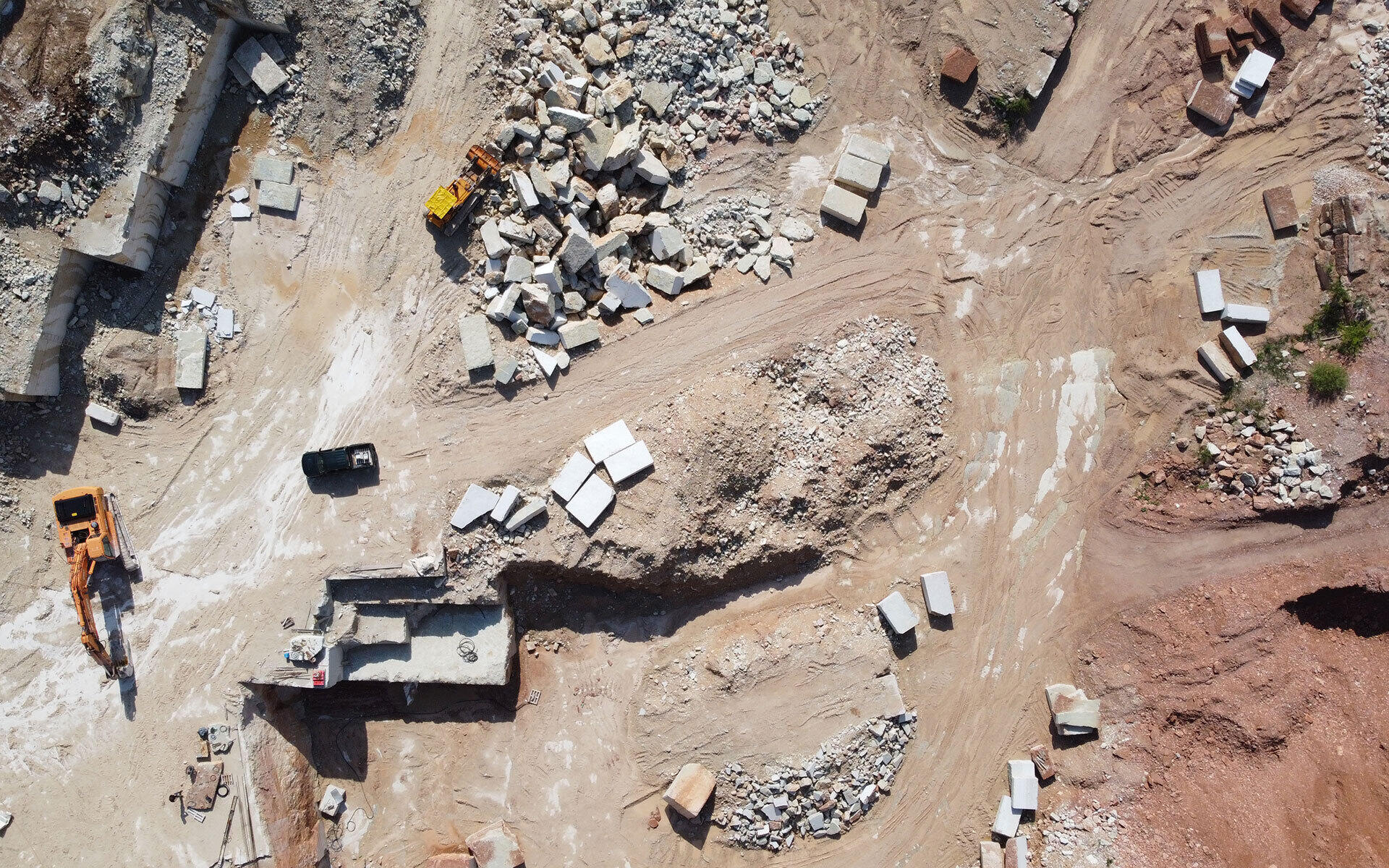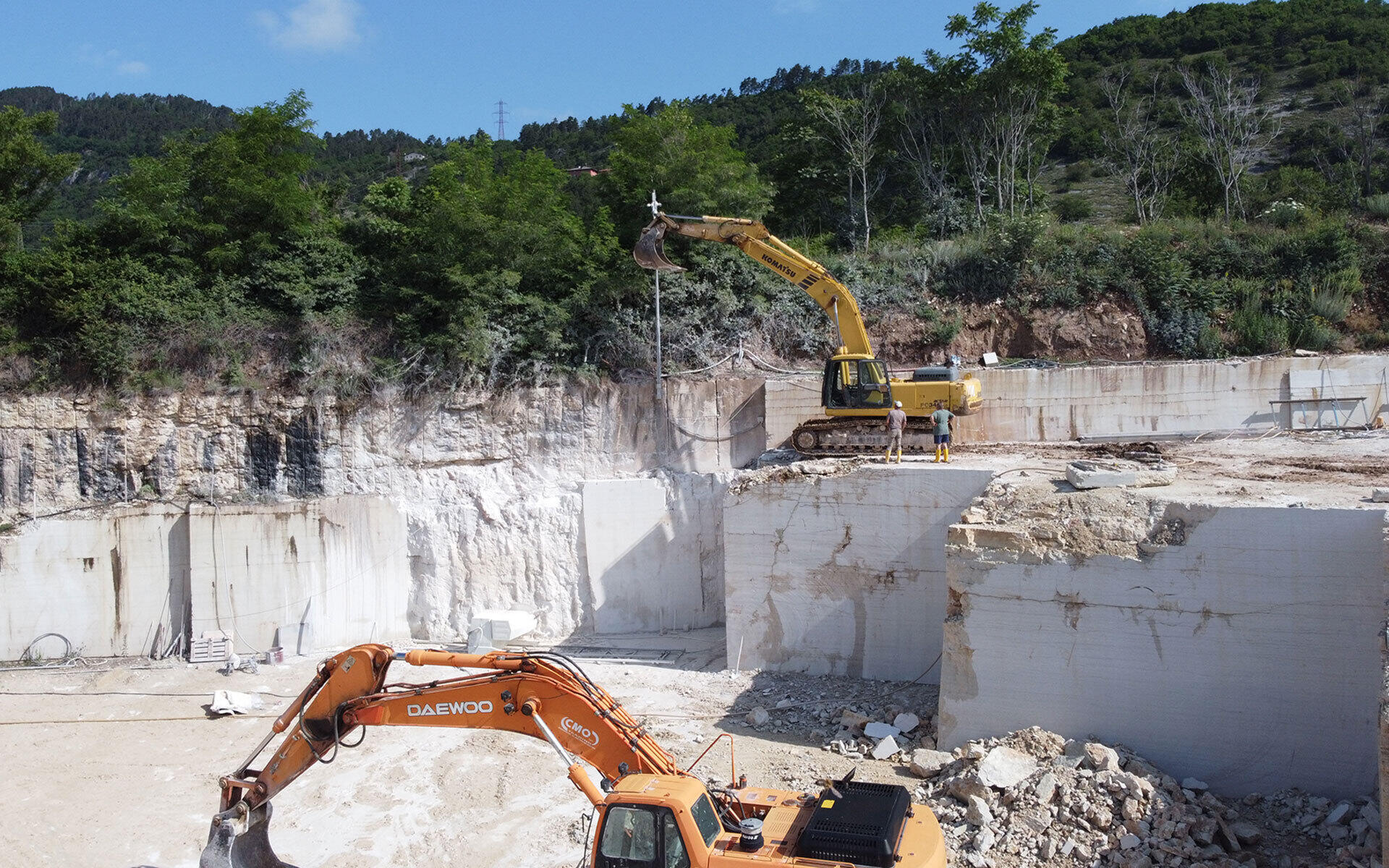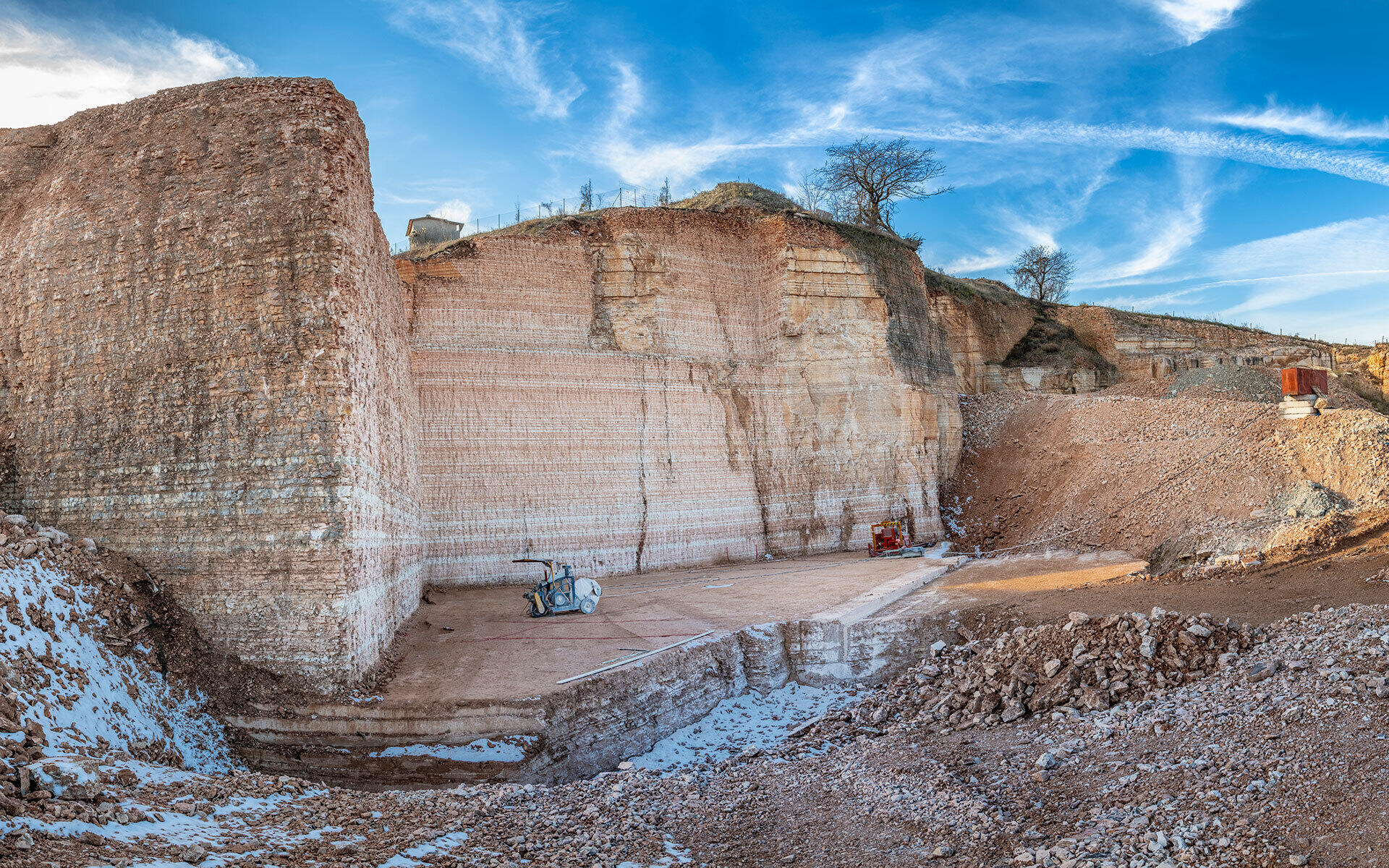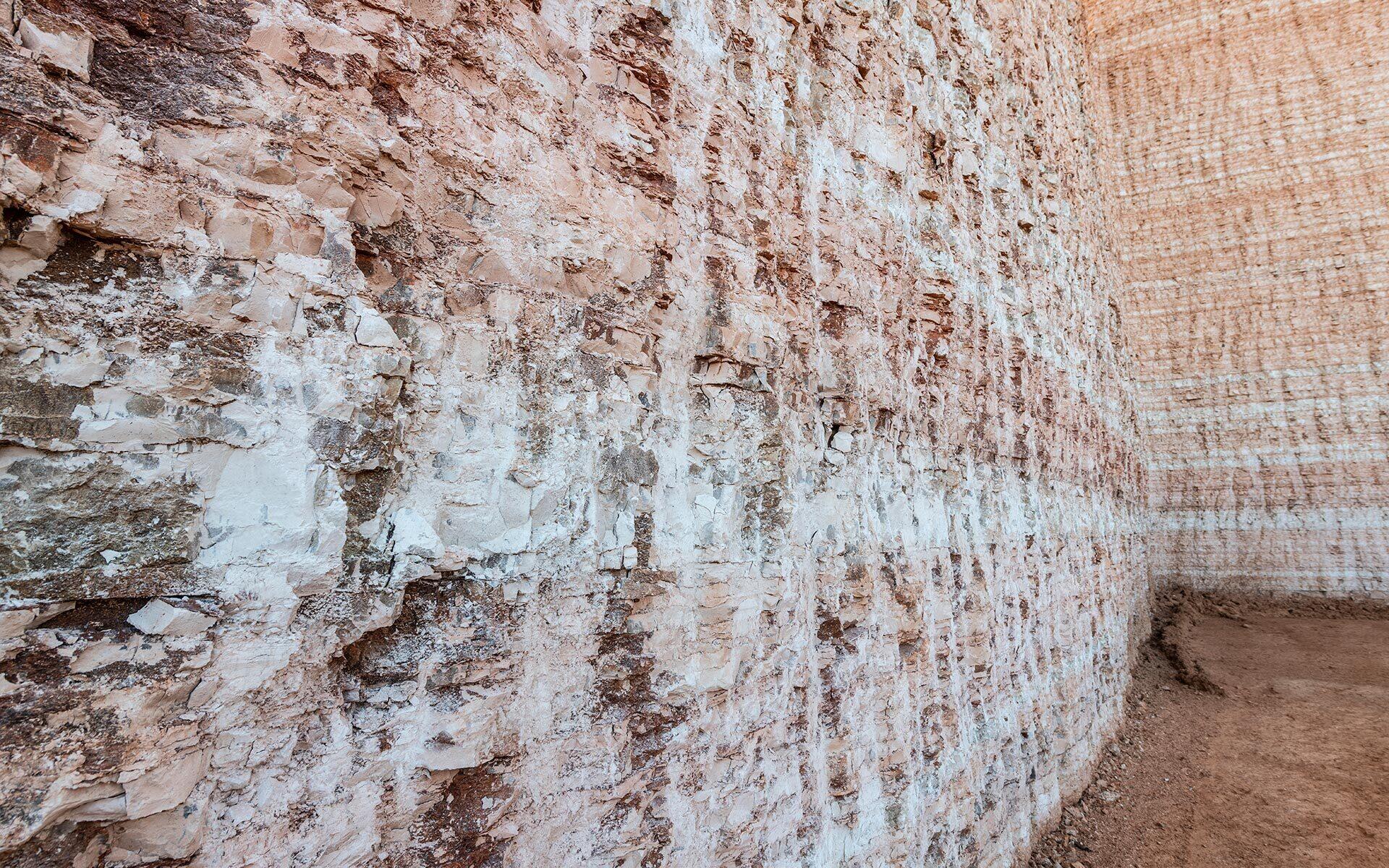Own Quarries

The decision to work mainly with the materials we extract from our own quarries allows us to have control over the whole production process and therefore maintain our professional standards throughout all the stages – from extraction to the finished product.
Our history as marble workers cannot be separated from our history as quarriers – first with a local Lessinia Stone quarry, then, from the early 1990s, through the acquisition of the Pila quarry in Pila di Villamontagna in the Province of Trento.
ROSSO AND VERDELLO TRENTO
The Pila Quarry
Quintarelli Pietre e Marmi is the sole owner of the only quarry in the world where the Rosso di Trento and Verdello di Trento stones are extracted.

Historical sources document the use of the quarries in Pila from Roman Empire times to the mid-twentieth century, a time when stone quarrying was one of the most popular professions. It was in this period that a lot of important construction work was carried out in Trento, including the train station, the mausoleum to Cesare Battisti, the Neptune fountain and many other public buildings and artworks.
The Quintarelli family, in partnership with a company from Trento, bought the quarry from the Redi family in 1991. In the following years, in large part thanks to the economic boom of the early nineties, large areas of Trento city centre were refurbished, the work winning the First European Prize for Urban Design (Carrara, 1995).
Since 2018, Quintarelli Pietre e Marmi has had exclusive ownership of the quarry and, after a significant commitment and a series of major investments, extraction work at the quarry is now back at full regime.
In the past year, an exciting development has taken place: as well as the renowned Rosso di Trento and Verdello di Trento, a new vein of Bianco di Pila white marble has been discovered for the first time in more than fifty years. This marble has always been extremely popular, being used for public and private buildings from the times of Bishop Bernardo Clesio in the early sixteenth century.
The Pila quarry is currently fully operational and will be able to meet all market demands in the coming decades. Moreover, the spirit of cooperation that has distinguished the company since 1964 means that there is Trento marble for everybody who wants it, whether finished or semi-finished, in slabs or in blocks.

LESSINIA STONE
The Loffa Quarry
We couldn’t fail to extract stone from our native Lessinia! Our main source is our Loffa quarry, located in the heart of the Lessinia hills.
Purchased in the 1970s by Antonio Quintarelli, the quarry is still open fifty years on and still tirelessly providing veins of the highest quality stone throughout its seventy-two strata, which vary in thickness from 2.5cm to 30cm.
Today it’s Silvano Momi, married to Antonio’s daughter Federica, who keeps a watchful eye on the production process, from blasting in the quarry to sawing, so that each stratum extracted is put to its ideal purpose, whether as floor tiles, stairs, cladding or the traditional stone roofs which are so characteristic of the Lessinia hills.
This same quarry is the source of the stone used to refurbish some of the most renowned historical buildings and urban spaces in the north of Italy, including the marble flagging in Via Mazzini in the centre of Verona, Palazzo Busetti in Reggio Emilia, the Domus Romana in Piazza Sordello in Mantua, the flagging in the town centre in Valeggio sul Mincio and Villa Zoppi in the village of Colognola ai Colli, to the east of Verona.

